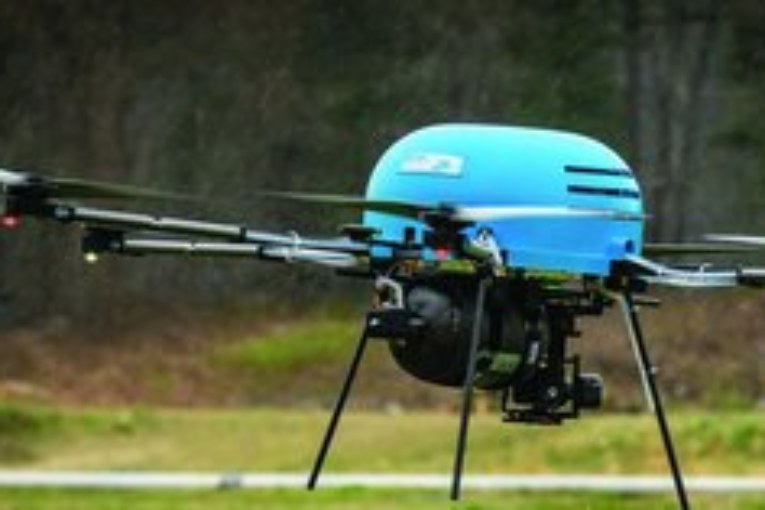
By 2023, the number of commercial drones is expected to triple to about 800,000, according to the Federal Aviation Administration in the U.S.
While most drones use rechargeable batteries – sometimes with a small gas-powered engine for backup – Burnaby-based Ballard Power Systems Inc. is betting the future for drone power is hydrogen fuel cells.
It has launched a new subsidiary, Massachusetts-based Ballard Unmanned Systems Inc., which recently showcased its new commercial drone system powered by fuel cells at a trade show in Chicago.
The new subsidiary was spun out of Protonex, which Ballard acquired in 2015. Ballard sold off two of Protonex’s business units but kept the one that had developed the FCair fuel cell designed for unmanned aerial vehicles (UAVs).
“Our thought is it’s a really big market potential,” said Phil Robinson, vice-president and general manager of Ballard Unmanned Systems.
But it’s more of a long-term investment for Ballard, which doesn’t expect the new technology to be a big money-maker for a few years yet, said Guy McAree, Ballard’s director of investor relations.
“The UAV market is very much a future opportunity,” McAree said. “We don’t expect any significant revenue from this market in the near term. We’re really planning for significant growth, but a few years down the road. Five years from now, we think it’s going to be a really significant market opportunity.”
The FCair fuel-cell system developed by Ballard Unmanned Systems was designed to power large commercial drones.
Among the sectors putting drones into service, the oil and gas industry is using them for inspections of pipelines, wells and offshore oil rigs.
The problem with battery-powered drones is their relatively short range. Typically they can fly for only about 30 minutes before they need recharging. Robinson said a fuel-cell drone can fly for about 90 minutes before it must be refuelled. That’s partly because, although they are bigger, they are lighter.
“In general, we can get three times the flight range that you can with batteries because we’re one-third the weight of batteries,” Robinson said.
“Anything that is either a very large area or a very long distance is a natural application for the fuel-cell UAV. The people we are working with right now are oil and gas pipeline leaseholders, transmission line inspections, oil platforms – so oil rigs that are in the ocean – but also onshore where you’ve got a bunch of wells.
“We have a number of these customers lined up through the summer to go test-fly their missions that they’re doing today with the smaller drones. But they have to come back and land constantly, so they’re very eager to try this out and see if it works.”
The first manufacturer to integrate an FCair system into a commercial drone is BFD Systems in the U.S.
“They make custom large drones – heavy lift drones,” Robinson said. “BFD was the first one to actually start flying. That happened just within the last month that we started flying this craft with BFD.”
Ballard is not the only player in the fuel-cell drone space. But the company thinks it may have an edge because its technology addresses a moisture issue associated with fuel cells.
To operate efficiently, fuel cells need to be moist and warm – but not too warm, Robinson explained.
While other fuel-cell systems use “open-cathode” air-cooled systems, the Ballard FCair uses water in a closed-cathode system.
When hydrogen passes through a fuel-cell membrane, it combines with oxygen to produce water, heat and electricity. The FCair system captures the water to keep the fuel cell moist and at an optimum temperature.
“What that means is that we can operate in very dry environments, very hot environments, very cold environments, high altitudes, environments where open-cathode systems are very challenged,” Robinson said.
Currently, North America is leading commercial drone adoption, but Ballard sees the market growing in Europe as well.
In addition to drones, Ballard Unmanned Systems is exploring the use of the FCair fuel cell in the marine equivalent of drones – unmanned submarines.
“That is a project that we’re doing with Cellula Robotics, another company in Burnaby,” Robinson said.
You can read more of the news on source
